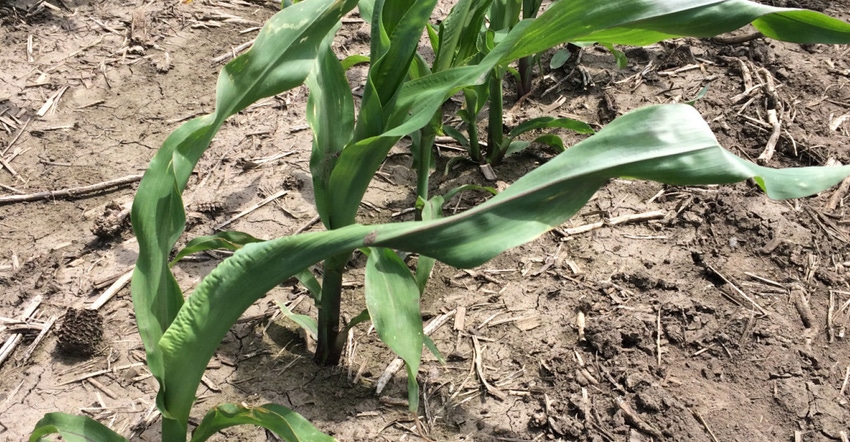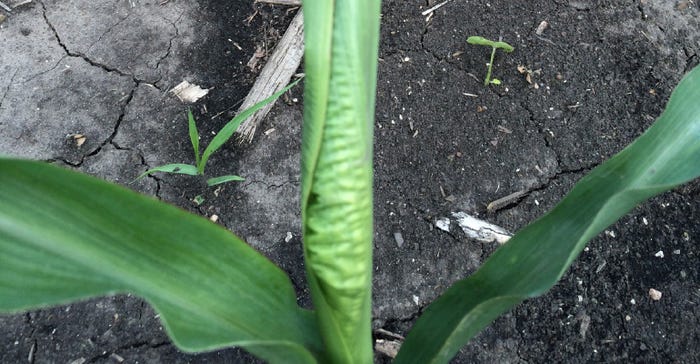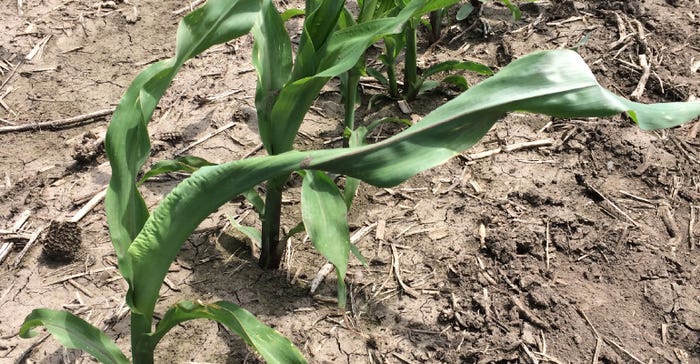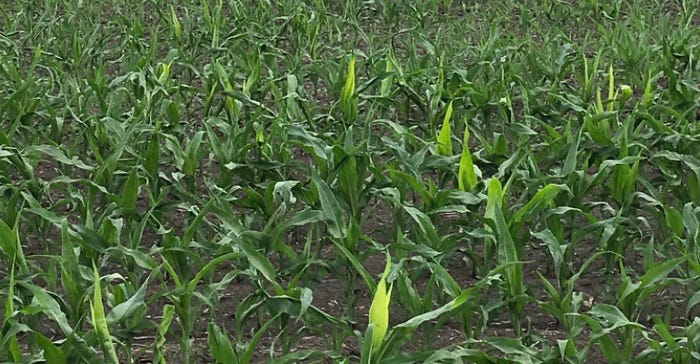June 1, 2020

Sponsored Content
Rapid Growth Syndrome (RGS) can result in some unsightly plants, but it is of little concern when it comes to plant health and yield. Symptoms include leaves twisted in the whorl that have a wrinkled appearance, followed by new bright yellow leaves. Affected plants are distributed at random throughout the field.
The cause for RGS is not fully understood, but the symptoms tend to follow certain weather patterns. RGS will frequently appear in early planted corn when there are shifts in weather patterns from cool, cloudy days to warm, sunny days. Interestingly, this is not always the case. Occasionally, symptoms have been observed during the inverse weather event: warm, sunny days followed by cool, cloudy days. RGS tends to appear after a sudden shift in GDU accumulation. One potential cause is that the rapid change in growth rate with temperature swings results in leaves growing at different rates. The outer leaf grows more slowly than the inner leaf resulting in leaf wrapping. There is some speculation that exudates from leaf edges cause leaves to become sticky and inhibits them from unrolling. (Purdue)


Symptoms
The first symptoms of RGS will either be tightly rolled leaves in small plants between the V4 and V6 growth stages or heavy wrinkling in older plants, up to V10. Rolled leaves of ten twist and curve the top of the plant over in an effect called buggy whipping or roping. As RGS progresses and the leaves finally emerge from whorl, they will be pale yellow to almost white. This is caused by the leaf ’s inability to absorb sunlight while confined inside the whorl. The impacted leaves will green up as sunlight stimulates chlorophyll production; normal color returns in seven to ten days of “normal” weather.
Impact
RGS is often misdiagnosed as herbicide injury, as it can mimic damage from chloroacetamide (Group 15), growth regulator (Group 4), or HPPD inhibitor (Group 27) herbicides. Late application of growth regulator chemistries like 2,4-D or dicamba can result in buggy whipping due to rapid cell elongation. The best way to distinguish herbicide damage from RGS is that RGS will be sporadic throughout the field while herbicide injury usually has a patter n that follows the sprayer.


All corn hybrids can show the symptoms of RGS under certain conditions because it is a physiological response, but some hybrids seem more prone to have this response than others. Personal experience would suggest that slower emerging but fast-growing hybrids are more susceptible.
Generally, corn will grow out of this “ugly” stage within seven to ten days with no indication it was symptomatic in the first place. The impact on yield is negligible because only a few leaves on a small number of plants are affected. If you have any questions on rapid growth syndrome, be sure to reach out to your local Beck’s representative or trusted advisor.
Beck’s is the largest family-owned retail seed company in the United States that serves farmers in Illinois, Indiana, Iowa, Kentucky, Michigan, Minnesota, Missouri, Ohio, South Dakota, Tennessee, and Wisconsin. According to a recent seed industry survey, Beck’s ranks as the fourth largest corn and soybean brand in the United States. At their core, all Beck’s employees are Farmers at Heart. It stands for something special. It has soul. It has truth. And it represents a community of farmers, employees, and dealers who strive each day to seek challenges, push boundaries and innovate. Beck’s has, and always will be, proud to serve a community of farmers who love what they do and who are proud to be… Farmers at Heart. For more agronomic new and information, visit Beck’s Agronomy Talk page or blog at BecksHybrids.com.
About the Author(s)
You May Also Like




